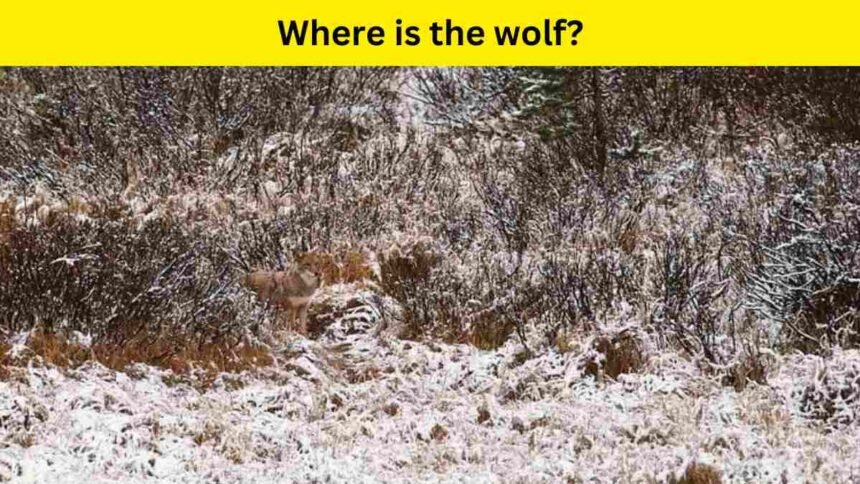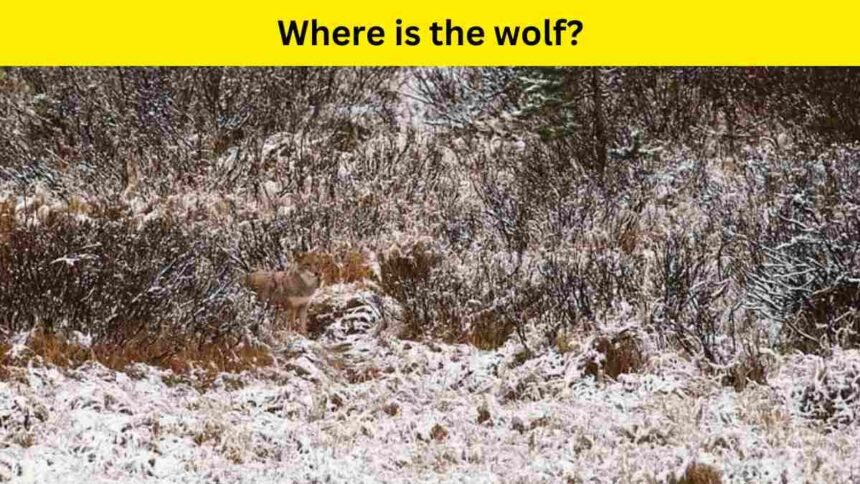In the vast realm of human perception, the phenomenon of optical illusions continues to captivate and perplex us.
These intriguing images have the power to challenge our visual processing, prompting us to question what we see and how our brains interpret the world around us.
Among the myriad optical illusions that have captured our collective imagination, the hidden image illusion stands out as one of the most fascinating.
In this article, we delve into the enigmatic world of hidden image illusions, exploring their mechanisms and presenting a tantalizing visual test that promises to challenge even the keenest of observers.
Unveiling the Illusion

At first glance, the image appears to be a simple composition of shapes and colors, devoid of any discernible pattern or subject matter.
However, upon closer inspection, a hidden figure emerges, camouflaged within the intricate design.
The challenge, then, is to identify this concealed image within a limited timeframe – a mere 10 seconds.
It’s a test of visual acuity and cognitive processing speed, offering a thrilling opportunity to put one’s perception to the ultimate test.
The Science Behind the Illusion
To understand the hidden image illusion, it’s essential to grasp the underlying principles of visual perception.
Our brains are remarkable organs, capable of processing vast amounts of visual information in a fraction of a second.
However, this rapid processing comes with its limitations, as our brains often rely on heuristics and shortcuts to make sense of the world around us.
These shortcuts, while efficient, can sometimes lead to errors in perception, giving rise to optical illusions.
The hidden image illusion exploits a phenomenon known as “figure-ground perception.”
This perceptual organization principle describes our tendency to perceive objects as either figures (the primary focus of attention) or background elements (the surrounding context).
In the case of hidden image illusions, the concealed figure is designed to blend seamlessly into the background, making it difficult to distinguish from its surroundings at first glance.
The Challenge of Spotting the Hidden Wolf
Now, let’s turn our attention to the specific challenge at hand: spotting the hidden wolf within the image in just 10 seconds.
The image in question features a complex arrangement of shapes and colors, carefully crafted to conceal the outline of the wolf amidst the visual noise.
To succeed in this challenge, one must rely on keen observation skills, rapid pattern recognition, and an understanding of visual cues that may hint at the presence of the hidden figure.
As participants engage with the image, their brains must sift through the visual information presented to them, searching for any anomalies or irregularities that may betray the presence of the concealed wolf.
Every second counts in this high-stakes visual test, as participants race against the clock to unlock the mystery hidden within the image.
The Psychology of Perception
The hidden image illusion provides a fascinating glimpse into the inner workings of the human mind and the complexities of visual perception.
Our brains are constantly interpreting the visual stimuli that bombard us, relying on a combination of sensory input and cognitive processing to make sense of our surroundings.
Optical illusions, such as the hidden image illusion, reveal the delicate balance between perception and reality, demonstrating how easily our minds can be deceived by cleverly crafted stimuli.
Researchers have long been fascinated by the psychology of perception, seeking to unravel the mysteries of how and why we see the world the way we do.
Studies investigating optical illusions have shed light on various aspects of visual perception, from the role of attention and memory to the influence of cultural and contextual factors on our interpretation of visual stimuli.
The Appeal of Visual Challenges
What is it about visual challenges like the hidden image illusion that captures our imagination and fuels our fascination?
Part of the appeal lies in the thrill of discovery – the satisfaction of uncovering something hidden or elusive within a seemingly ordinary image.
Visual challenges tap into our innate curiosity and desire for exploration, inviting us to test the limits of our perception and cognitive abilities.
Moreover, visual challenges provide a welcome respite from the demands of everyday life, offering a moment of escape and diversion from our routine tasks and responsibilities.
In a world filled with distractions and obligations, the opportunity to engage with a captivating visual puzzle allows us to momentarily set aside our worries and immerse ourselves in the joy of problem-solving.
The Role of Technology in Visual Perception
Advancements in technology have revolutionized the way we interact with visual stimuli, opening up new possibilities for exploration and discovery.
From virtual reality simulations to interactive digital displays, modern technology has expanded our understanding of visual perception and provided new tools for studying optical illusions.
In the case of the hidden image illusion, technology enables us to disseminate the visual challenge to a global audience, inviting participants from around the world to test their skills and share their experiences.
Social media platforms and online communities serve as hubs for enthusiasts to discuss and dissect the intricacies of the illusion, fostering collaboration and camaraderie among participants.
Conclusion
In conclusion, the hidden image illusion represents a captivating intersection of art, science, and psychology, offering a glimpse into the mysteries of human perception.
As participants engage with the visual challenge, they are invited to test the limits of their visual acuity and cognitive processing speed, unlocking the hidden secrets concealed within the image.
Whether one succeeds or fails in spotting the hidden wolf in 10 seconds, the journey itself is a testament to the remarkable capabilities of the human mind and its endless capacity for exploration and discovery.
So, are you ready to take on the challenge and put your super vision to the test?
